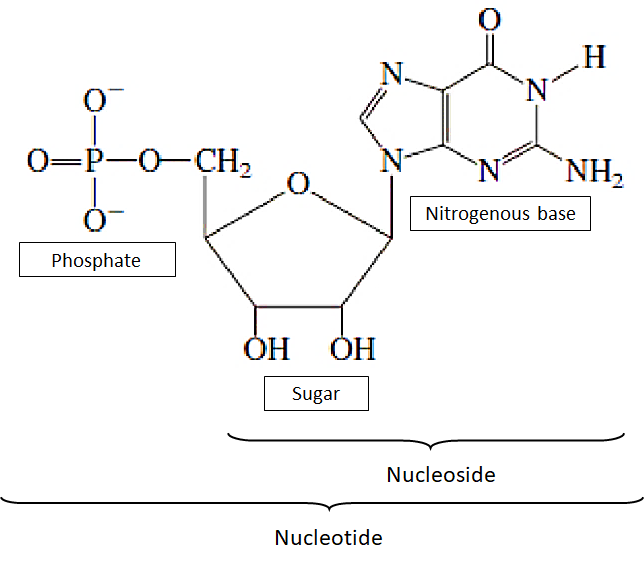Question
Question: Explain the difference between nucleoside and nucleotide....
Explain the difference between nucleoside and nucleotide.
Solution
Hint: Nucleotide and nucleoside are the building blocks of nucleic acid (RNA and DNA). The nucleotides in the human DNA are arranged in a double-helical structure as shown in the Watson and Crick model.
Complete answer:
Nucleotides consist of the components such as a nitrogenous base, sugar, and a phosphate group while the nucleosides contain only sugar and a base. The nucleotide forms the basic structure of RNA and DNA, while the nucleoside occurs before the nucleotide itself.
| Nucleoside | Nucleotide
---|---|---
Chemical composition | A nucleoside consists of a nitrogenous base attached to a sugar(ribose or deoxyribose) with the help of a covalent bond.| A nucleotide consists of a nitrogenous base, sugar(ribose or deoxyribose) and one to three phosphate groups
Relevance in medicine | Several nucleoside analogs are used as a treatment for viral disease or cancer.| Malfunctioning nucleotides are one of the main causes of all cancers known today.
Example| Examples of nucleosides include adenosine, guanosine, cytidine, thymidine, uridine, and inosine.| Nucleotides have names complimentary to the nucleosides, but with the addition of phosphate groups. For example, 5’-uridine monophosphate.
Additional information:
Deoxyribonucleic acid (DNA) is composed of two polynucleotide chains arranged in a double-helical structure. It carries the genetic information for the development, functioning, growth, and reproduction of all organisms and few viruses.
In DNA, there are four different bases- adenine (A) and guanine (G), Cytosine (C), and thymine (T). In RNA three of these are the same as in DNA: adenine, guanine, and cytosine. Instead of thymine (T) RNA consists of uracil (U).
Note: The biological functions of nucleotides are:
1. For data storage – The store the genetic information as part of DNA or RNA.
2. As energy currency – ATP or Adenosine Triphosphate is the basic unit of energy required to carry out all the functioning and processing in our body.
3. For cellular communication- cAMP, cGMP, etc. are used as secondary messengers for hormones and enzymes.

